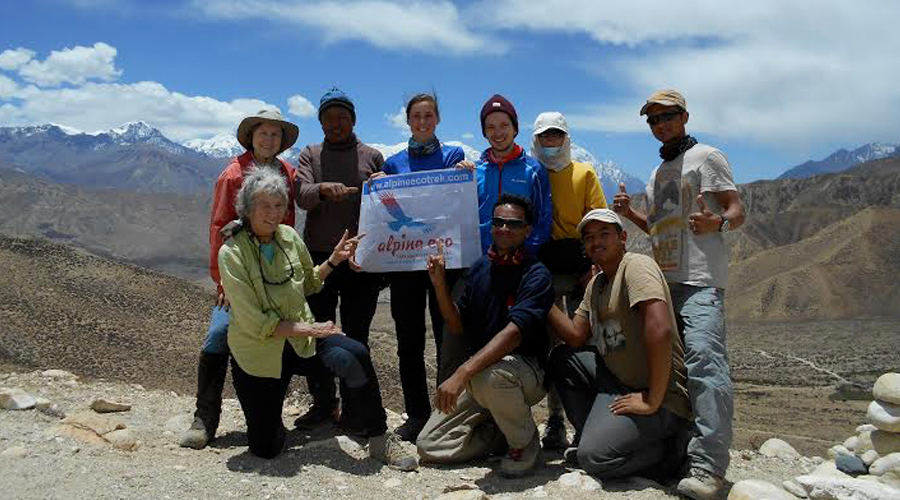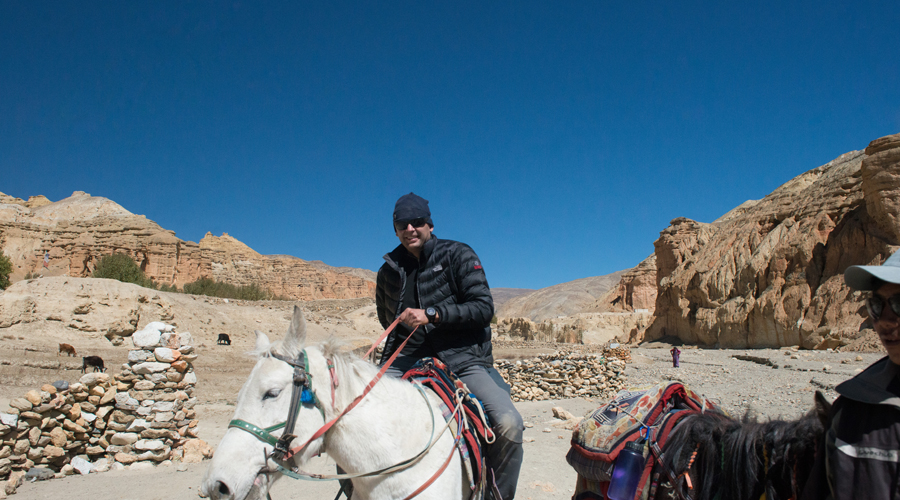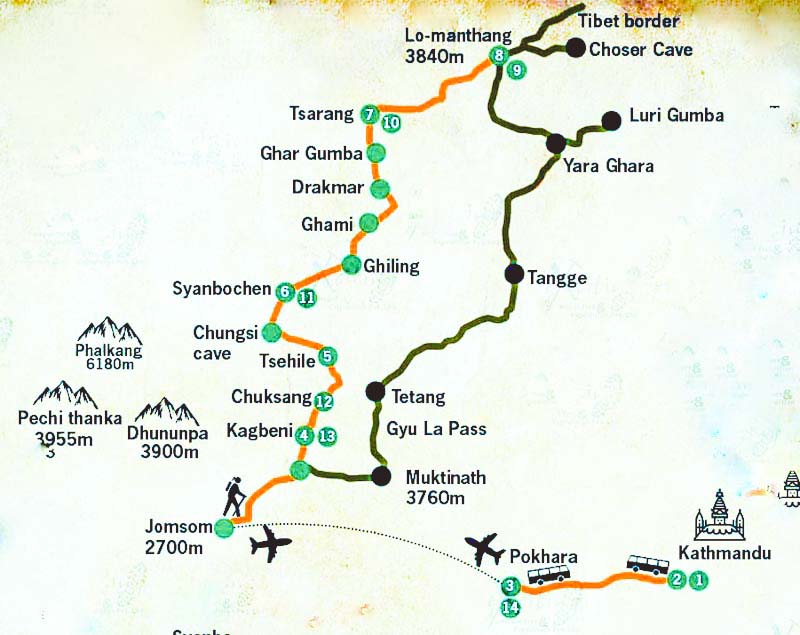Upper Mustang trekking -The barren landscape of the Tibetan plateau throws up a fascinating concoction of medieval culture, monastic charm and spiritual purity unparalleled elsewhere in the Himalayas.
We take a spectacular flight west along a range of massifs to Pokhara where we will stay the night. The following morning, we fly into the heart of the Annapurna region to the gates of the Kali Gandaki River, landing at the mountain strip of Jomsom (2,800m).
From here we embark into a different world as the moonscape of the Tibetan plateau presents hues of gray, red and brown. The view from our lodge or tents is one of a deserted wasteland dotted with sporadic settlements, and frequented by people who work hard in the dry soils to seek out a living. The people of the valley were once very prosperous from a busy trade in salt between Tibet and India, but nowadays, times are harder.
Up high in the sandstone cliffs above the trail, giant towers of rock have been eroded into fascinating shapes by the wind, and hermit caves are testament to the dedication of many monks of the region. Fossils underfoot remind us that the high plateau we are trekking to was once a seabed. From time to time the wind plays as messenger for the yak caravans up the valley, and from the Buddhist monasteries, the prayer horns can seem haunting in the thin air. The lonely lammergeyer soars high above, perhaps searching out the next sky burial. It is an eerie sensation to be in these mountains, yet utterly captivating.
The trail leads up the Kali Gandaki river valley towards the capital of the Kingdom, Lo Manthang - a city with a royal palace, temples, monasteries and a thriving culture. The people in this city are surprisingly sophisticated. But it is the many villages on the route into and out of Mustang which make this journey such a rewarding one. With several passes over 4,000m, it is also a strenuous trek.



